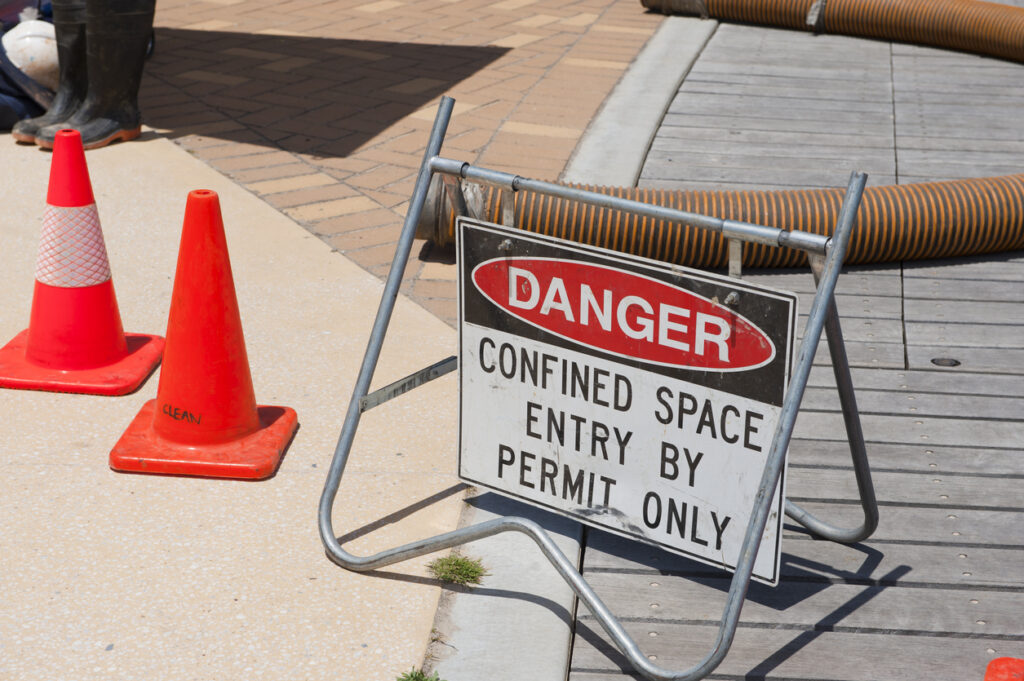
Dangerous atmospheres have seriously injured, or even in some cases, killed workers in confined spaces. It is so critical, as a Confined Space Attendant, to be aware of the hazards that are lurking there for you AND how to identify their presence when entering a confined space.
Identifying Dangerous Types of Atmospheres
Although there are numerous types of atmosphere that could potentially harm you, the most commonly occurring are:
Flammable and Explosive Atmospheres
The sources of these types of atmospheres generally come fr
om sources such as natural gas leaking from gas lines or some type of natural source, methane from decaying matter in the space such as sewer, propane gas from leaking cylinders or equipment, gasoline vapor from tanks, spills or equipment, or even vapor from solvents used in cleaning, painting or refinishing.
Toxic Atmospheres
Some of the same sources for the flammable and explosive atmospheres are also highly toxic as well. Those same solvent vapors and decaying sewer can produce gases that are not only an explosive hazard, but also highly toxic. Hydrogen sulfide from raw petroleum or even carbon monoxide from engine exhaust in a confined space can produce lethal toxic atmospheres.
Oxygen-deficient Atmospheres
Humans require between 19.5 and 23.5% oxygen in our breathing air in order to sustain normal functions. If oxygen falls below that level, it can cause serious loss of judgement, coordination or even loss of consciousness. In a confined space, oxygen can be displaced by other gases or used up by rusting metal, combustion or bacterial digesting sewage.
Oxygen-enriched Atmospheres
Although a more rare condition in confined spaces, too much oxygen can cause oxygen toxicity, which can cause serious interference with the central nervous system. This type of atmosphere most often occurs with leaking oxygen hoses or cylinders.
Check For Atmospheric Hazards Before Entering Any Confined Space
Never enter a confined space without first checking the atmosphere. And checking it with the proper equipment.
Use Properly Calibrated Gas Detection Equipment
Most of these dangerous atmospheres are indetectible by human smell or taste alone, so it is crucial that you use the proper equipment properly calibrated to the confined space and its dangers.
Make sure the equipment is able to detect what you suspect. Some detectors have sensors that check for oxygen content, explosive gases or vapours, and a range of toxic gases. Some have only one or two sensors and may not detect certain types of hazards. You may need a selection of detectors—one detector can’t test for everything.
Check All Levels of the Space
All gases are different. Some are lighter than air and will settle at the top of a space. Some are heavier and will settle at the bottom of a space. When it comes to checking gas contamanents, it is crucial to test all levels of the space. Danger may be lurking where you didn’t bother to test.
Continue to Test and Re-test
Don’t assume that the area will remain safe the entire time you are in it. And, if you leave a space for a break or lunch, don’t assume the area is safe when you return. Dangerous atmospheres can develop at any time. Gases can develop and lines can begin leaking at any time. Make sure you are constantly testing and re-testing the area.
As a confined space worker, NEVER try to rescue a worker overcome in a confined space unless you are trained and equipped for it. Many workers have put themselves and their co-workers in even more danger by trying to help. Always get emergency help when anyone is overcome in a dangerous atmosphere.
For more information on this or any other safety topic, contact ResponsAble Safety Staffing. And if you are a confined space attendant looking for great employment opportunities, make sure you are in our database by filling out an application by clicking here.